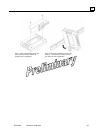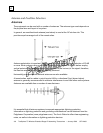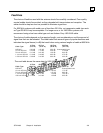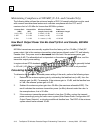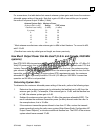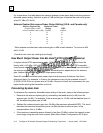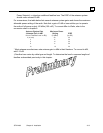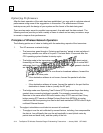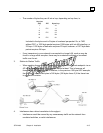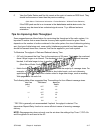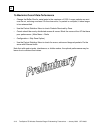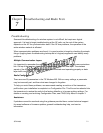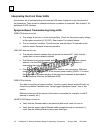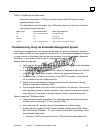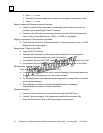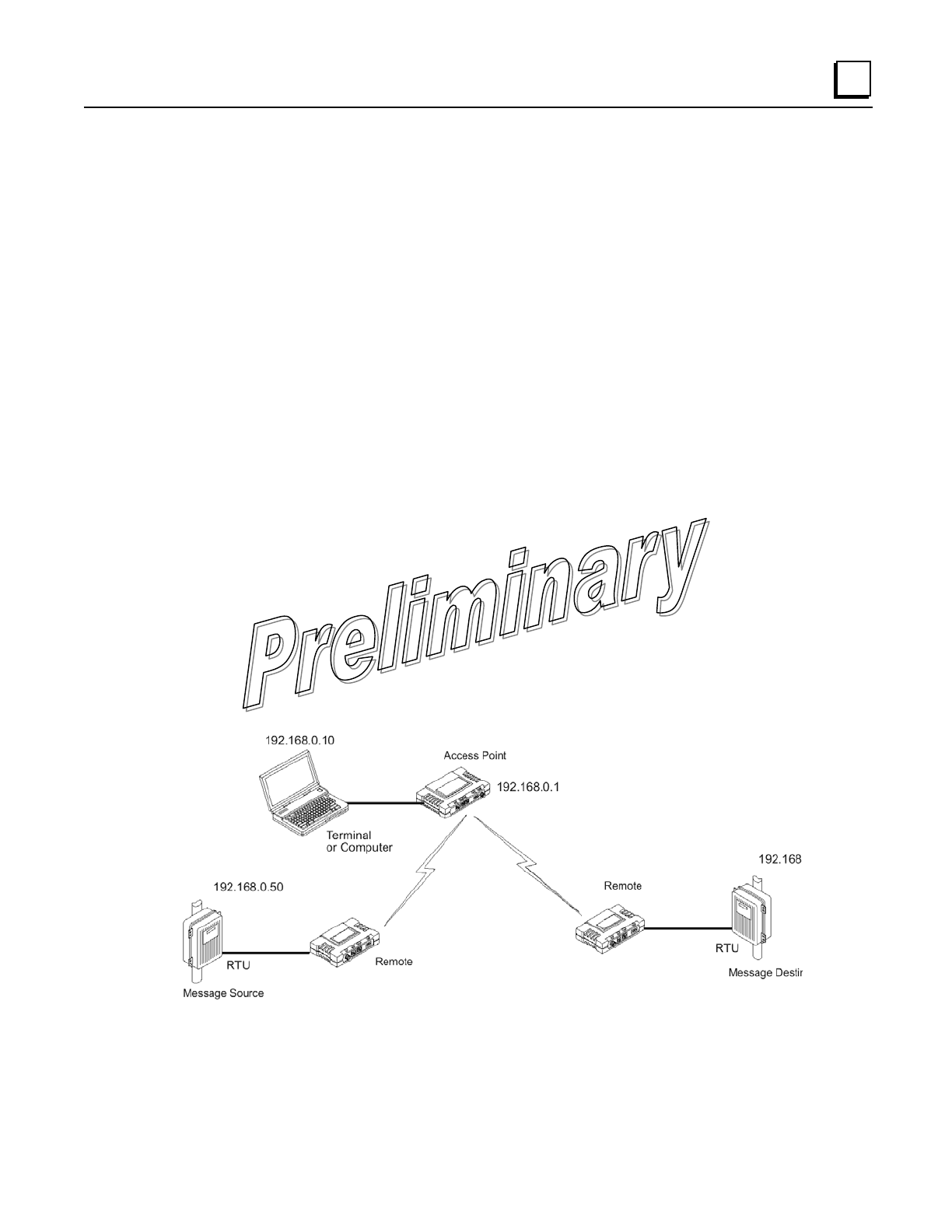
GFK-2489 Chapter 6 Installation 6-15
6
▪ The number of bytes they can fit into a hop, depending on hop time, is:
Hop time
(MS) FEC Bytes/hop
7 45
7
FEC 11
14
139
14
FEC 59
28
324
28
FEC 151
Included in the byte count is 9 bytes of overhead per packet. So, at 7MS
without FEC, a 1000 byte packet requires 1009 bytes split into 45 bytes/hop, or
23 hops. 1026 bytes of data also requires 23 hops; however, a 1027-byte data
packet requires 24 hops.
▪ If any transceiver in your network is connected to a large LAN, such as may be
found in a large office complex, there may be undesired multicast or broadcast
traffic over the air.
3. Station-to-Station Traffic
▪ When sending frames from one remote endpoint to another remote endpoint via an
AP transceiver (see below), throughput is halved at best. This is because all
frames must go through the AP. Therefore, in the previous 100 byte UDP example,
the number of over-the-air bytes is 380 bytes (190 bytes times 2) if the frame has
to go station to station.
4. Interference has a direct correlation to throughput.
▪ Interference could be caused by any unnecessary traffic on the network from
unrelated activities, or radio interference.



